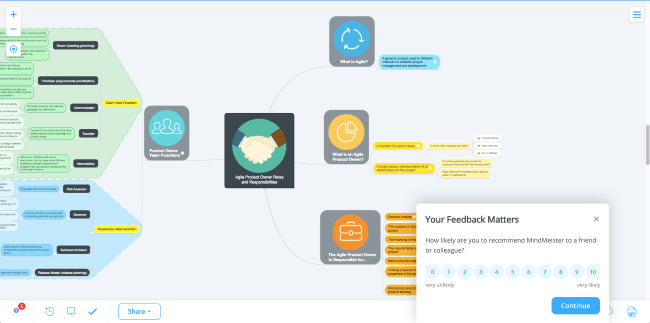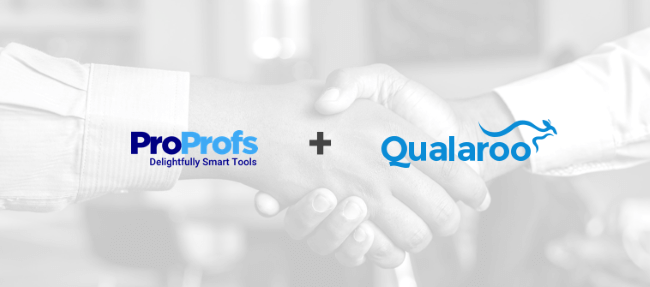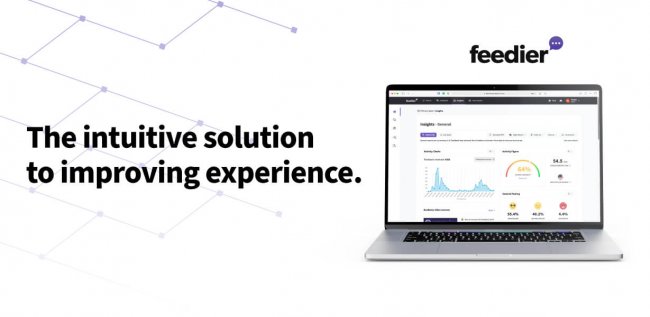It has been said that having a good Voice of Customer (VoC) program leads to improved client retention, better employee engagement and less spending on customer service. And while this is entirely true, it seems that many businesses still fail to implement and manage an effective voice of the customer program. In fact, far too often we see organisations rush into building a VoC program without aligning all of the necessary factors to move forward in creating a customer-centric organisation. So we’re here to change that…
Updated:May 2025
Now, before we get started, it’s important to keep in mind that the Voice of Customer is no new concept. Take this excerpt from the 1993 MIT Marketing Science paper, titled “The Voice of Customer”:
“[VOC] provides a detailed understanding of the customer’s requirements, a common language for the team going forward in the product development process, key input for the setting of appropriate design specifications for the new product or service, and a highly useful springboard for product innovation.”
Now obviously, in 1993, the meaning of the Voice of Customer was somewhat different than it is now. But interestingly enough, the fundamentals are still the same. Especially the part about obtaining a ‘detailed understanding of the customer’s requirements’. The biggest difference is that Voice of Customer has – as you might’ve guessed – evolved over the years. Especially with the introduction of more and more digital solutions and the rise of customer expectations on digital channels.
Nowadays, there are various strategies for collecting and analysing the Voice of Customer – all of which depend on your organisation’s goals, the digital channels you’re using (i.e. website, mobile apps and email) and of course, how you wish to proceed with the data you’re given.
In this guide, we will investigate the following:
- What is the Voice of Customer?
- Why is the Voice of Customer important?
- How to build a Voice of Customer Program
- How to capture the Voice of Customer
- Best Voice of Customer tools

Free White Paper: A Digital Feedback-Fueled Approach to Personalisation
A guide to Personalising the Digital Customer Experience (CX) with Online Feedback.
What is the Voice of Customer?
Voice of Customer is a research technique that maps out the detailed wishes and needs of your customers. In short, Voice of Customer means listening to what your customers have to say about a product or service. For instance, listening to your customers helps you create an optimal customer experience.
A well-rounded VoC programme should include three different stages of feedback: Collection, Analysis and Taking Action. While many companies only collect feedback, there is so much more to the process if you want to really understand your customers and provide real value for them. In other words, you should have a VoC software in place that not only collects VoC data, but also enables your team to analyse and act on the data you’ve collected.
Why is Voice of Customer important?
Listening to the Voice of Customer is important because it helps businesses transform their product or service into something that customers truly want and will continue to invest time and money into. Not to mention – it also serves up quite a few monetary benefits such as:
- An increase in revenue: Through reduced churn and the ability to attract new customers.
- A reduction in costs: By improving processes, ensuring compliance and creating greater consistency.
But the best benefit of all is its ability to provide you with the insights you need to make meaningful changes to the customer experience and therefore maintain a loyal customer base.

Source: SuperOffice
For example, listening to what your customers have to say about your website. You don’t necessarily see your website in the same way your customers do. In fact, you probably experience your website, apps and email campaigns a lot differently from your customers and visitors (or any digital channel for that matter), which means you don’t always know if these channels fully meet their needs.
This means that there is an “experience gap” in how you expect or want your customers to experience your company and how they actually experience it. That’s why entering into a dialogue with your customers and/or visitors helps you to create a better customer experience. It also helps bring in new customers because it’s easier for them to achieve their goal online and thanks to the customer insights, you can better set your company apart from your competitors.
A win-win, right?
How to Build a Voice of Customer Program
Building an effective Voice of Customer program enables you to really understand what’s working for your organisation and what isn’t. So how do you get started?
Here we will outline 4 steps to getting started with your Voice of Customer program.
1. Set goals for your VoC program
First, you’ll need to set your goals and define what you want to achieve with your VoC program. Are there processes and strategies that need to be changed for the better?
No matter what kind of issues your organisation seems to be facing, you can build a Voice of Customer program which is entirely focused on these problems, giving you the insights you need to solve them.

Some of the most common goals within a VoC program include:
- Understanding / Increasing customer loyalty
- Improving online sales funnels
- Optimising web page usability
Want to learn more about building up your VoC program around these goals? Check out our Quick Guide on Asking the right questions in an online feedback form.
So, how can you achieve these goals? Let’s take a look at the next step in your VoC program: the collection process…
2. Gather Voice of Customer Data
Now it’s time to reach out to your customers and find out how they’re experiencing your digital channels. You can do this by collecting VoC data via VoC surveys on any digital channel you find valuable (such as your website, mobile app or within email campaigns).
Capturing the Voice of Customer at every (important) touchpoint in the online customer journey is critical. The process of collecting this data opens the door to insights that will help you not only optimise your websites and mobile apps, but also enable you to capture leads and turn those leads into sales. The online journey can be broken down into several Moments of Truth (MoTs). MoTs are crucial as these are moments in which your customer forms an impression of your company or brand.

For example, MoTs in the retail industry include searching for products, search result pages, the actual purchase of a product and after-sales service (returns and delivery). For a smooth on-site and/or in-app journey, these particular moments must be effortless for the customer. This is where online feedback plays a crucial role. Collecting VoC data during these MoTs will give you the best insights into how you can improve and enhance these touchpoints.
Creating an effective VoC Survey
But what does a good VoC survey look like? There are a few things to keep in mind…
- Keep your surveys short. We cannot stress this enough! Gone are the days when companies would send out page-long surveys to customers to gauge their satisfaction. The reason being that the majority of your customers simply do not have the time to go through and answer these long and drawn-out surveys. It’s a hassle for them, and it has a high probability of causing what we call ‘survey fatigue’.
- Interaction is key. Don’t make your questions too intricate – be clear in what you are asking so your customers understand. Always try to incorporate one or two questions that require an open-text answer. These will give you deeper insights into how your customers feel and can even generate ideas you haven’t thought of yourself.
- Keep it relevant. There are appropriate questions and inappropriate questions to ask depending on your goal(s). For example, you wouldn’t ask someone to provide a Net Promoter Score (NPS) right as they’ve entered your website or before they’ve even become a customer. This goes to show that timing is rather important, and surveys should be situational.
Try any of these Feedback Form Templates
Online feedback forms are dynamic tools used to capture customer feedback on websites and apps. But what are the best Feedback Form Templates for your website?
3. Analyse your VoC data
As previously mentioned, it is important that you not only focus on collecting VoC data, but also on analysing that data. In fact, many organisations actually overlook this step. They craft beautiful surveys and strategically place them across their digital channels, but that’s it. No follow-up plan or way of analysing the incoming data to make it actionable is implemented.
By analysing your data, you can identify major breakthroughs for your business. For instance, you can start using *customisable dashboards which help you visualise and pick up on trends occurring within your data. Or take advantage of text analytics and discover more about the sentiment and emotion behind your customers’ data.
*Customisable dashboards make it possible for you to visualise VoC data to your unique needs. Various trends can be discovered using good dashboarding, enabling you to make the appropriate changes to your website or mobile app.
In other words, it is important that you start to understand the narrative in each piece of data. Some of these narratives will expose trends and/or patterns of your customers and their experiences. Once you understand the backstory, the numbers will begin to work in your favour and help you make informed decisions personalised to each customer.
4. Monitor results continuously
Lastly, to ensure the continuity and success of your Voice of the Customer program, you’ll need to consistently monitor your results and make improvements. Your VoC program should reflect the challenges and opportunities your business is faced with. Therefore, it needs to develop and grow alongside your company.
How to capture the Voice of Customer
There are a variety of ways to capture VoC data, depending on your goals. Let’s take a look at a few examples of VoC surveys to illustrate this.
VoC Survey for Measuring Customer Loyalty
For those of you who want to measure customer loyalty, Net Promoter Score (NPS) and CSAT are your new best friends. For our example, we have chosen NPS as it is a very popular metric to benchmark, however CSAT (Customer Satisfaction) is just as beneficial for measuring customer loyalty.

Where should you use it on your website?
Adding NPS surveys to your account page (as this means that the visitor is logged in) on your website or e-commerce site allows you to capture NPS results when your customers choose to interact with your company. This includes asking customers for their feedback right after they’ve made a purchase. Arguably this is more convenient for both parties than sending emails and hoping that your customer engages. It’s also important to mention that you are collecting these scores from actual customers rather than anonymous visitors who have yet to build up any sort of relationship with your brand.

NPS Survey example from the task management tool MeisterTask
VoC Survey for Improving Sales Funnels
If you intend to use VoC surveys within your online sales funnels, there are two scoring elements you might want to consider using: Goal Completion Rate (GCR) and Customer Effort Score (CES). When you request GCR in your feedback forms, you can simply ask your visitors, “Did you achieve your goal?” including a list of answer options, “Yes”, “Partly”, “No”. Alternatively, you can ask your visitors to provide you with CES using the following question: “How much effort did it take you to achieve your goal?” whereby the visitor must select a rating on a five-point scale from “very much effort” to “very little effort”.

Example of a VoC survey using GCR and CES.
Where should you use it on your digital channels?
GCR will typically be found in places where a customer is trying to make a purchase, using either a passive feedback method (user-initialised) or as exit feedback (triggering a feedback form based on exit intent). This metric should not be used on the homepage or landing page, as this is just the beginning of the funnel, which means that the goal can not be completed at that point.
CES is typically used to understand how much effort it took your customer to achieve his/her goal. One way is to ask them at the end of the funnel (e.g. when they’ve successfully made a purchase). At this point, it is clear that your customer was successful in making a purchase. But what you still don’t know is how easy or difficult the process actually was.

Example of CES Survey on the Allianz website.
VoC Survey for Optimising Usability
A more generic way of collecting VoC data is by placing a ‘passive’ VoC survey button on the side of the web page. We refer to this as passive feedback as it is initiated by the visitor (i.e. via a feedback button). It is a great way of capturing insights into web page usability.

Where should you use it on your digital channels?
This type of feedback can be collected using a passive feedback form on whichever pages you like. Having it on all web pages can never hurt, as it gives the customer the chance to provide feedback whenever they want.

Example of usability VoC survey on Recharge.com.
Curious how real companies use these VoC surveys in practice? Check out these VoC examples from top-tier brands.
Best Voice of Customer Tools
Ready to jumpstart your VoC program? Then you’ll need to find the right VoC tool first…
1. Mopinion

Mopinion is an all-in-one user feedback tool that helps organisations collect and analyse website, mobile and email campaign customer feedback. It has an easy-to-use interface, with which users can build, design and configure feedback forms however they like. Mopinion users can also target specific groups of visitors with feedback forms and gain insights into why they are struggling to convert. Once collected, feedback items can be visualised in customisable dashboards and charts for advanced analyses. Additionally, digital teams can share and take action on these feedback items in a timely manner with the help of smart alerts.
2. Medallia

Medallia’s Enterprise Feedback Management (EFM) is a voice of customer tool capable of collecting a large amount of VoC data from multiple survey sources, including web, email and phone. Once collected, you can have reports sent directly to your phone. This VoC tool can also be integrated with most enterprise resource planning systems, which help users compare financials with customer experiences.
3.InMoment

InMoment is a cloud-based customer experience optimisation platform. Through its Experience Hub, InMoment offers multiple solutions, including Social Reviews and Advocacy, Employee Engagement solutions and its Voice of the Customer (VoC) platform. The VoC platform, in particular, provides online reports, real-time alerts and occurrence management. It works by combining survey data with customer data from other sources such as CRM, social and financials.
4.Qualaroo

Qualaroo is good for creating short and easily accessible surveys. These appear at the bottom of the screen as a widget and enable the user to poll visitors using simple questions. There is also a feature within this tool that allows users to create rules as to where surveys are triggered and with which questions – in which case a feedback form will pop up in a subtle manner at the bottom of the screen.
5. Feedier

Feedier supports customers to improve their end-user experiences in real-time. To make operational teams addicted to the voice of the customer, Feedier provides the most intuitive solution to collect both direct and indirect voice of customer data in one place, analyse it in real-time, and trigger personalised alerts at every level. The solution relies on automation, data management, machine learning insights, and gamification.
Get started with your VoC program today!
We’re certain this guide will help you, or at least give you some inspiration for jump starting your new Voice of Customer program. As you can see, there’s a lot to consider. But once your VoC program is up and running, you’ll be glad you started. Listening to the Voice of Customer is so critical to the success of your digital channels and to creating a loyal customer base in the long run!
Here is a larger selection of Voice of Customer tools.
Need help kickstarting your VoC Program?
Get advice from one of Mopinion's representatives through a live demo or take our software for a spin!
![[:en]Complete Guide To The Voice Of The Customer[:nl]voice-of-customer-cover-img[:de]voice-of-customer-cover-img[:fr]voice-of-customer-cover-img[:es]voice-of-customer-cover-img[:]](https://media.mopinion.com/wp-content/uploads/2020/11/28110349/voice-of-customer-cover-img-300x106.jpg)





